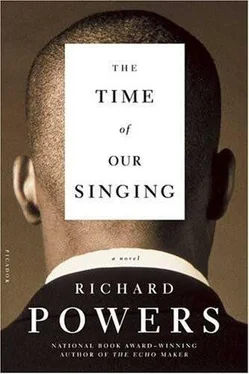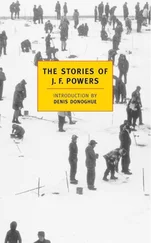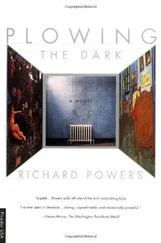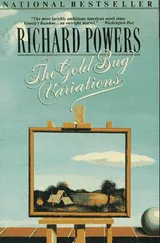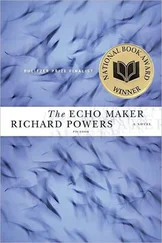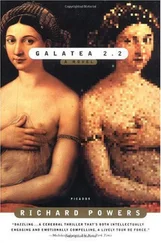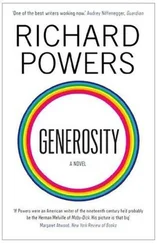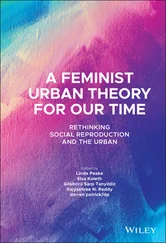“But if everybody’s on their own clock…?” My voice scatters. My courage, too, like the pigeons from my brother’s screech. “What time is it, really?” I sound like my own frightened child, a small flood-tossed boy who can’t get past his first timeless question: Is it tomorrow yet?
Da beams. “Ah, you have it, boychik. I knew you would. There is no single now, now. And there never was!”
As if to prove the ridiculous claim, he walks us up the last little neck of island to a hidden valley in the Heights. Behind a rim of trees is an ancient monastery. “The Cloisters,” Da says. Behind that, the even older river, which he doesn’t bother naming. We push through a hole in the side of the air and go back six hundred years.
“Here is the fifteenth century. But if we turn here, we go into the fourteenth.” Da points to the centuries, like places. I’m turned around, like Mama sometimes gets when we go down into the subway and wind up on the wrong platform. If the past is older than the present, then the future must be younger. And we must all go backward with each passing year.
“This building is not a real building. It is a nice big…hmm?” Da jumbles his hands together, looking for the word. “A mixed-up puzzle picture. Bits and pieces, from places with all different ages. Cut up in the Old World and shipped off to the New for rebuilding. Brought together into one museum, like a little index. A versammel ed word book of our past!”
He says “our,” but that’s the salad he makes of English. We always have to figure what his words really are. This is not our past. No American, I know, has ever set foot here, except by getting lost. It seems to me that every spot on earth must be a diorama, like the kind Jonah and I make with Mama: Apollo giving Orpheus his first lyre, or Handel sitting at his desk and writing the Messiah in twenty-one days. Each spot its own now, its own never.
“It collects, here, five different abbeys from France,” Da says. He names them, and the names pass into the empty future.
“How did they get the buildings over here?” I ask.
My brother shoves me. “Stone by stone, dummy.”
“How did they get them?”Da is gleeful. “Rich Americans stole them!”
A guard glares at us, and Jonah and I hustle Da down the walkway to safety. We turn into a courtyard of arches that shelters a garden. It reminds me of a place, the school I’ll live in, years from now. Holding up each arch are two stone columns. Each column sprouts a crown of stone vines, strange snakelike ropes and coils, ancient creatures in the undergrowth. Some of these figures do things small boys shouldn’t see and adults don’t. Jonah and I race, high-speed heel-toe, around the courtyard, giggling at the taboo messages sent by stone carvers seven hundred years dead. Around us are scores of brutal paintings on wood. We’re in some stone-carved children’s tale, the world’s rough boyhood.
Da reins us in with a palm to each of our shoulders, keeps us from knocking over Europe’s priceless baby pictures. How many museums we’ll dash or drag through — Modern Art, Indian, Jewish, Met, Cooper-Hewitt, Hall of Fame for Great Americans — how many exhibits we’ll absorb, rapt, obedient, or bored, on our way to meeting our future selves. But for some reason, this museum grabs Jonah even more than the giant toboggan of dinosaur bones down on Eighty-first. He stands in front of a suit of armor, ready to take it on in personal combat. I don’t know what he sees — some kings and catapults fantasy, knights slaying dragons, a boy’s bedtime tale. He’s giggling, ready to move into some secret wing hidden in time that no one has yet discovered.
Da steers us on. I’ll always obey that hand. We enter a room, dark, gray, and cold, the stone heart of some fantastic castle, cut out and transplanted to this place, hidden at the tip of our island. “Will you see this picture?” Da asks. He points to a wall-sized curtain of heavy cloth, a huge green rug filled with flowers. I look for a picture in the monster thing. There are millions of them, hiding in the vegetation.
“What is there? What do you see?” Da waits, happy, for my answer. “An Einhorn, yes? What does English name him?”
“Unicorn,” Jonah says. The word is everywhere, on all the signs. Da doesn’t read them.
“Unicorn? Uni-corn!” The word delights him.
The beast is huge and white, filling the entire frame. Da cocks back and looks. He stares at a point through the unicorn, behind the tapestry, beyond the wall it hangs on. He takes his glasses off and leans in. He mutters something in German I can’t make out. He asks, “What is this picture of?”
Jonah is looking, too. But he’s not as desperate to answer as I am. My eye runs a loop-the-loop. The wall carpet is too big to take in whole. I can’t put the parts together, can’t even see them all from my eye level. The unicorn sits in a makeshift prison, a round three-rung fence it could step over politely if it wanted. A fancy green belt hangs around his neck, something Mama might put on for church. The thing I think is a fountain is really the unicorn’s tail. A dancing midair ghost turns out to be the beast’s beard. He sits or he lies or he rears up; I can’t figure it out. His horn looks as long as his entire body. Behind him is a tree with letters floating in it— Aand D, or A and a backward E. Maybe these are the unicorn’s initials.
Then I see it: the chain. One end of the chain is clamped to the tree, and the other is fastened to the unicorn’s collar. The collar is a cuff, and the unicorn is caught, a prisoner, forever. All over his body are wounds, stab marks I didn’t see at first. Spurts of cloth blood pour out of his side.
“He’s captured. The humans got him. He’s a slave.” I tell Da what the picture is, but he’s not satisfied.
“Yes, yes. He’s trapped. They have him in their craft. But what is the picture of?”
I feel my face starting to cry. I stamp my feet, but a look from Jonah stops me in my steps. “I don’t know. What do you mean? What are you trying to say?”
“Look up close.” He nudges me. I step. “Step closer.”
“Da!” I want to cry again. “The guard will get me.”
“The guard will not get you. You are not the guard’s slave! If this guard tries to get you, I will get this guard!”
I step as close as I dare, ready at any second to be caught and sentenced. All three of us will be chained forever, imprisoned in old gray stone.
“Good, so, my Yoseph. What is the picture of?” I still don’t know the answer, let alone the question. So Da tells me. “Knots, boychik. The picture is of knots, no less than every picture we live in. Little knots, tied in the clothing of time.”
He doesn’t mean clothing, I’m almost sure. But for a moment, I see what he sees. Every now, made from every motion on earth, is a little tied colored thread. And if you can find a place to see it from, all the threads combine, tied in time, into a picture, bound and bleeding in a garden.
Jonah loses interest in Da’s lessons. Clocks, knots, time, Einhorns: My brother is past all of it, already leaping clean into his own future. He wanders into another room, where Da and I must track him down. He fidgets in front of a golden music stand in the shape of an eagle. On the stand is a book, and in the book, antique music. It looks nothing like the music I’ve known how to read for as long as I’ve known how to read words. It’s unlike any music we’ve ever seen. It has no bars, and not enough lines per stave. Jonah works at the notes, humming away furiously. But he can make nothing that sounds like a tune. “I can’t get it. It’s totally crazy.”
Da lets the two of us puzzle awhile before giving us the key. Or not the key, since this is music before there were such things. He gives us the secret of pitches in time. The click of counting, back when the world beat to another pulse. The shape of duration, before measures existed.
Читать дальше
